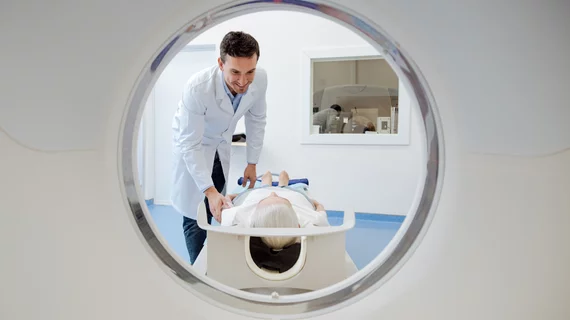MRI technique used for heart disease may work as ‘smart’ biopsy for aggressive pediatric cancers
An MRI technique typically used to assess patients with heart disease can also help spot aggressive cancers in children and determine if their treatment is working effectively, according to a study published Monday.
Researchers from the Institute of Cancer Research in London used T1-mapping to pinpoint fast-growing cancer cell “hotspots” in mice. The approach—which measures how water molecules move at microscopic levels inside of cells—also reflects how tumors respond to targeted drugs, according to the June 29 study published in Cancer Research.
Lead investigator, Yann Jamin, PhD, a research fellow at the institute, says further testing is clearly needed, but the potential for real-world neuroblastoma treatment is plainly evident.
"Our findings show that an imaging technique readily available on most MRI scanners has the potential to pick out children with aggressive cancer and give us early signs of whether a treatment is working,” Jamin added in a statement. “We've shown in mice that this technique can give us detailed insights into the biology of neuroblastoma tumors and help guide use of precision medicine, and next we want to assess its effectiveness in children with cancer.”
Using already available MRI T1-mapping, the team noticed cell populations with higher T1 values corresponded to more aggressive cancer cells, whereas lower values depicted benign or dead tissue.
Jamin and colleagues also performed MRI to determine how mice with neuroblastoma responded to the drugs alisertib and vistusertib, both of which target a crucial protein associated with aggressive forms of cancer. They noted that the TI measures did accurately reflect the drugs’ effectiveness and found such data could be used as biomarkers to guide treatment.
Next up, the group plans to enroll children in a clinical study to test T1- mapping as a ‘smart’ cancer biopsy technique.
"It's exciting that we've shown that a scan widely used to image the heart has the potential to greatly improve our understanding and treatment of cancer too,” said Paul Workman, chief executive of the Institute of Cancer Research. “There is already a lot of experience in using this technique in NHS hospitals, and I hope we can rapidly move to assessing its use in clinical trials of cancer patients.”

